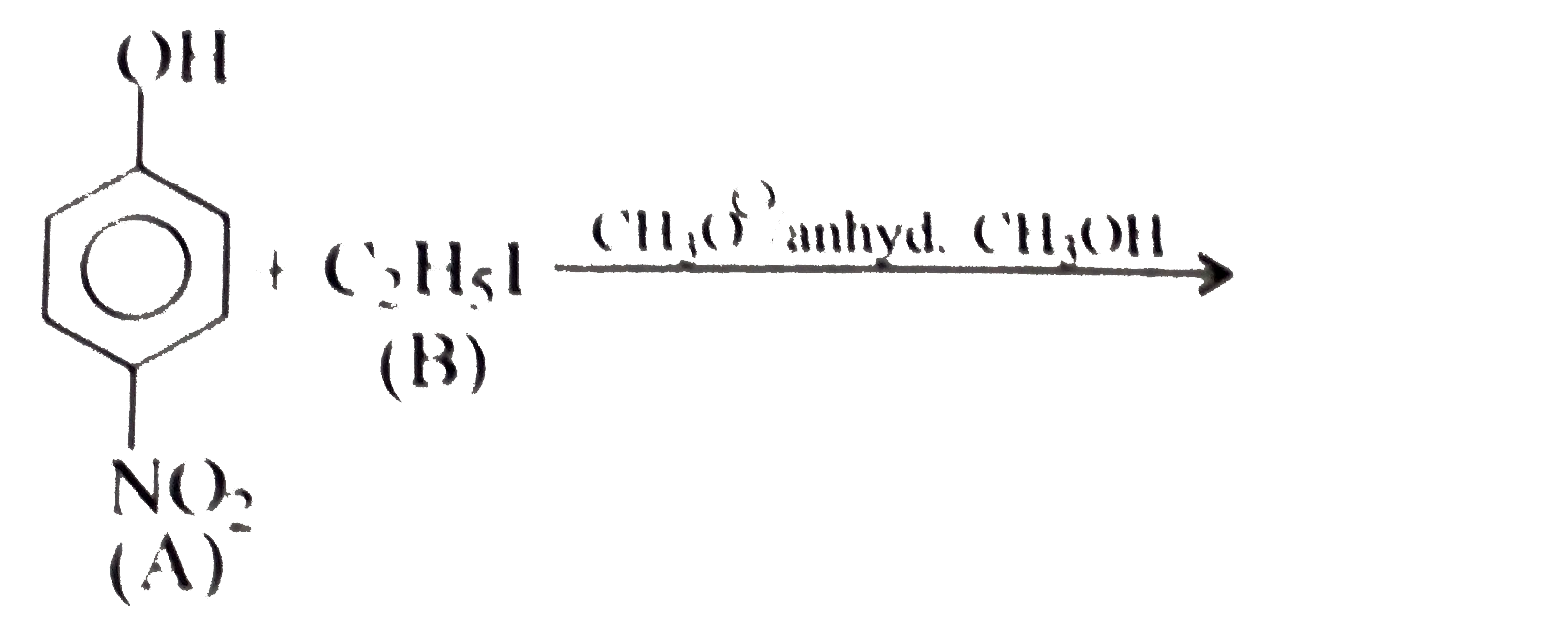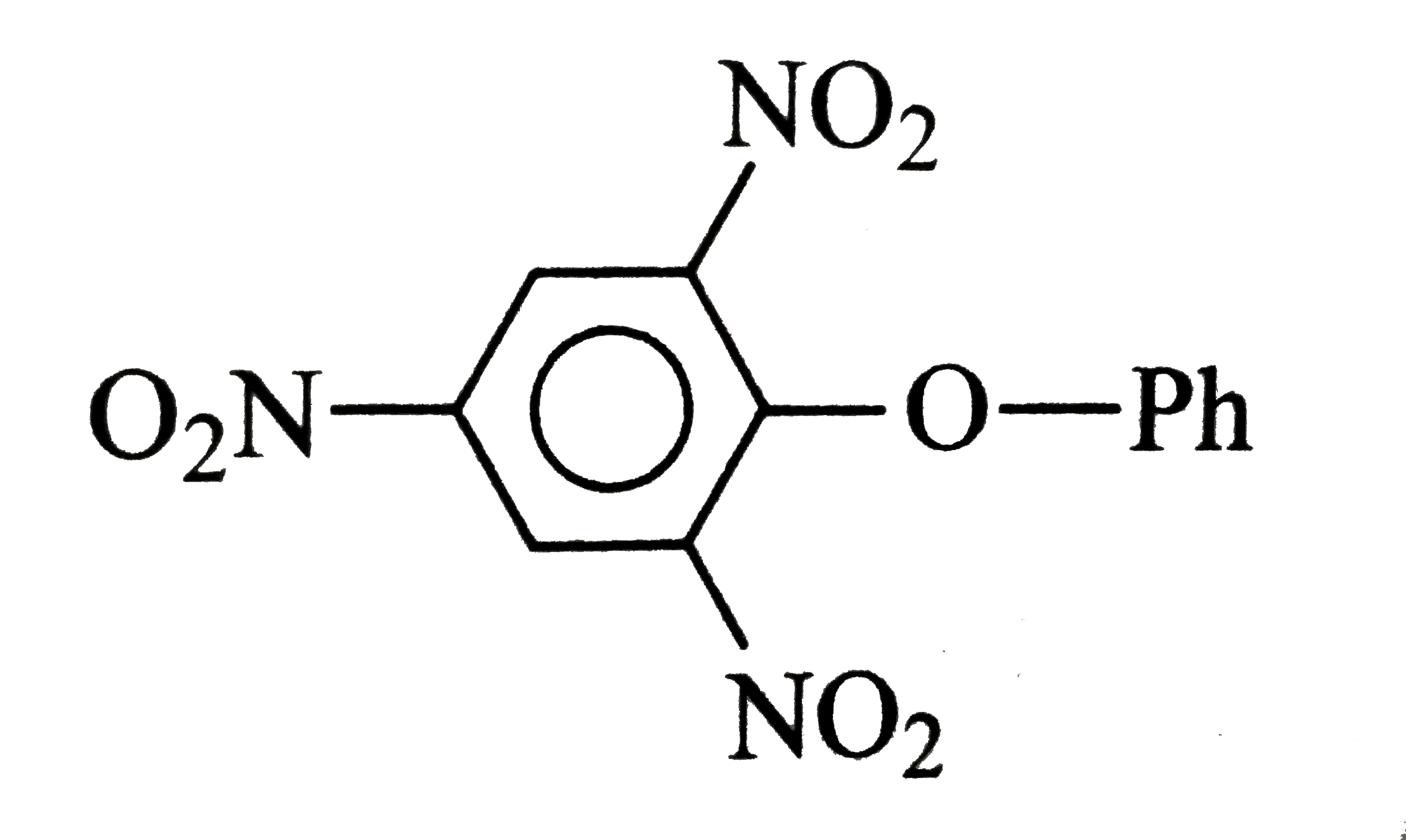How will you distinguish C2H5−O−C2H5 and C6H5−O−C6H5 by treating with HI ? Solution in Odia
C2H5OC2H5 reacts with HI to give C2H5I and C2H5OH while C6H5OC6H5 does not cleaved by HI.
Topper's Solved these Questions
- ETHERS BOOK - ARIHANT PUBLICATIONCHAPTER - ETHERS EXERCISE - ODISHA BUREAU.S TEXTBOOK SOLUTIONS (F) Short Answer Type II Questions
20 Videos
- ETHERS BOOK - ARIHANT PUBLICATIONCHAPTER - ETHERS EXERCISE - ODISHA BUREAU.S TEXTBOOK SOLUTIONS (G)Long Answer Type Questions
12 Videos
- ETHERS BOOK - ARIHANT PUBLICATIONCHAPTER - ETHERS EXERCISE - ODISHA BUREAU.S TEXTBOOK SOLUTIONS (D) Very Short Answer Type Questions
16 Videos
- ELEMENTS : NITROGEN FAMILYBOOK - ARIHANT PUBLICATIONCHAPTER - ELEMENTS : NITROGEN FAMILYEXERCISE - CHAPTER PRACTICE ( Long Answer Type Questions )
11 Videos
- EXAMINATION PAPER 2018BOOK - ARIHANT PUBLICATIONCHAPTER - EXAMINATION PAPER 2018EXERCISE - GROUP C
7 Videos
Similar Questions
Illustrate with examples the limitations of the Williamson's synthesis for the preparation of certain types of ethers.
View SolutionOutline two important methods of preparation and three properties of dialkyl ethers.
View SolutionGive the IUPAC names of the following
CH3CH2CH2OCH3
View SolutionWhat happens when PCl5 is heated?
View SolutionState and exlain Kohlarausch.s law of independent migration of ions .
The equivalent conductance of infinite dilution (A0) for sodium acetate , sodium chloride and hydrochloric acid are 78, 109 and 384 ohm−1cm2 g.
Calculate the A0 of acetic acid .
View SolutionSelect the correct answer:
a.
i. PhOC2H5 ii. Ph−−−O−−−Ph
iii. PhI iv. C2H5OC2H5
b.
i. p−−NO2−−C6H4−−OC2H5
ii. p−−NO2−−C6H4−−O−−C6H4−−NO2−−p
iii. C2H5−−O−−CH3
iv. p−−NO2−−C6H5−−I.
c.
i. C6H5CH2−−O−−Ph
ii. C6H5CH2−−O−−C2H5
iii. Ph−−O−−C2H5
iv. C2H5−−O−−C2H5
d.
i. C6H5CH2−−O−−C2H5
ii. C6H5−−CH2−−O−−Ph
iii. Ph−−O−−C2H5
iv. C2H5−−O−−C2H5 .
e.
i.
ii.
iii.
iv.
f.
i.
ii.
iii.
View SolutionIn the reaction
C6H5CHO+C6H5NH2→C6H5N→CHC6H5+H2O.
The compound C6H5N=CHC6H5 is known as
View SolutionC2H5Br can be converted into C2H5−O−C2H5 by:
View SolutionHow will you distinguish between C2H5BrandC6H5Br?
View SolutionIn the reaction : C6H5CHO+C6H5NH2→C6H5N=HCC6H5+H2O, the compound C6H5N=HCC6H5 is known as
View Solutionअभिक्रिया C6H5CHO→C6H5N=CHC6H5+H2O में C6H5N=CHC6H5 कहलाता है -
View SolutionThe major products that are formed by heating C6H5−CH2−O−C6H5 with HI
(A) 2C6H5I
(B) C6H5CH2IandC6H5OH
(C) 2C6H5OH
(D) C6H5CH2OHandC6H5I
View SolutionIdentify A from the following: (i) C_(6)H_(5)COCH_(3) overset(A)to C_(6)H_(5)COOH+CO_(2)+H_(2)O (ii) C_(6)H_(5)COCH_(3) overset(A)to C_(6)H_(5)-underset(OH)underset(|)overset(H)overset(|)C-C_(6)H_(5) (iii) C_(6)H_(5)COCH_(3) overset(A)to C_(6)H_(5)CH_(2)CH_(3)+H_(2)O
View SolutionIdentify the electrophile and nucleophile in the following reactions :
(a) C6H5N2Cl+KI→C6H5I+KCL
(b) C6H5N2Cl+C6H5OH→C6H5N=N−C6H4OH
(c) C6H5N2Cl+CH3OH→C6H5OCH3
(d) C6H5N2Cl+H2O→C6H5OH
View SolutionIdentify the electrophile and nucleophile in the following reactions :
(a) C6H5N2Cl+KI→C6H5I+KCL
(b) C6H5N2Cl+C6H5OH→C6H5N=N−C6H4OH
(c) C6H5N2Cl+CH3OH→C6H5OCH3
(d) C6H5N2Cl+H2O→C6H5OH
View Solution